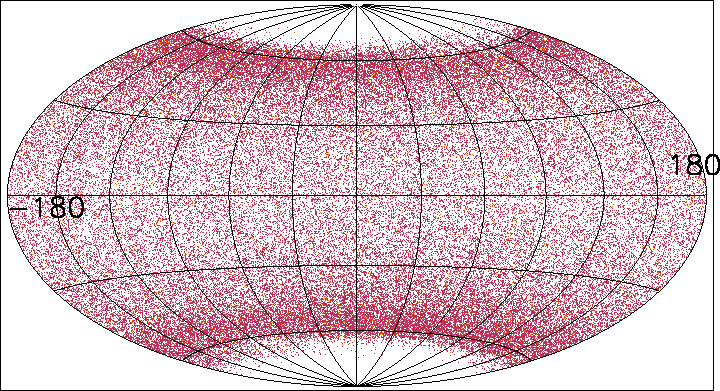
Distribution of star particles in
the sky, as would be seen from the Galactic center, 10 Gyr after disruption
of a satellite galaxy.
(Amina Helmi & Simon White, 1999, MNRAS,
307, 495)
We study numerical simulations of satellite galaxy disruption in a potential resembling that of the Milky Way. Our goal is to assess whether a merger origin for the stellar halo would leave observable fossil structure in the phase-space distribution of nearby stars. Although after 10 billion years few obvious asymmetries remain in the distribution of particles in configuration space, strong correlations are still present in velocity space. We find that a single satellite of current luminosity 10^8 L_\sun disrupted 10 Gyr ago from an orbit circulating in the inner halo (mean apocentre approx. 12 kpc) would contribute about approx. 30 kinematically cold streams with internal velocity dispersions below 5 km/s to the local stellar halo. If the whole stellar halo were built by disrupted satellites, it should consist locally of 300 - 500 such streams. Clear detection of all these structures would require a sample of a few thousand stars with 3-D velocities accurate to better than 5 km/s. Even with velocity errors several times worse than this, the expected clumpiness should be quite evident.

Distribution of star particles in
the sky, as would be seen from the Galactic center, 10 Gyr after disruption
of a satellite galaxy.
(Amina Helmi & Simon White, 1999, MNRAS,
307, 495)